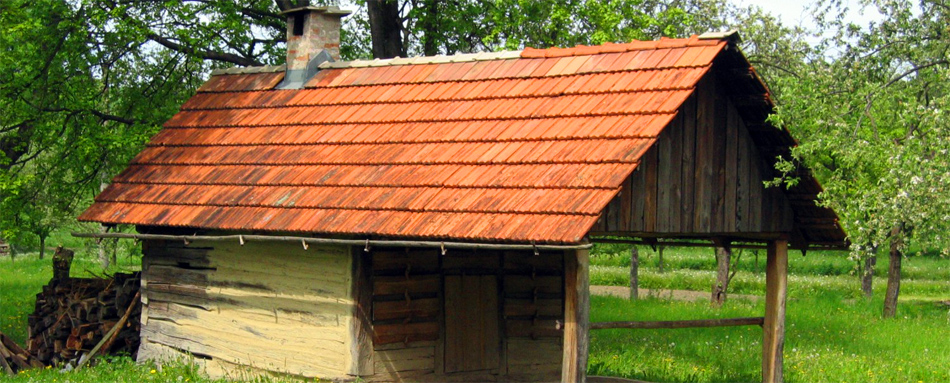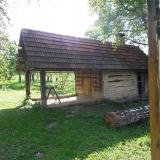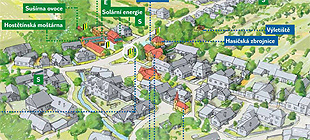
Fruit Drying Kiln
Drying fruit was the most common way to process it in this area in the past. First mentions of fruit drying kilns in eastern Moravia date back to the 17th century; the greatest bloom occurred in the second half of the 19th century. Unfortunately, out of thousands of fruit drying kilns existing in the past just a few persisted up to this day, and are still functional. One of these is a fruit drying kiln in the village of Hostětín, which has probably been standing in the garden behind the juicing plant since the beginning of the 19th century. In this timber house local people dry fruit for their own consumption in an old fashioned way: wood is used for heating and fruit is dried spread over 12 wooden crates that can be loaded with 300 kg fresh fruit at once.
Even modern fruit drying kilns can be heated with wood: the drying air is heated by heating registers or electric heating elements and is forced by fans to circulate.
In order to utilize heat efficiently, it is beneficial to use the heat recuperation which can decrease heat consumption.
Sliced apples and pears, and split plums without stones are dried most often. Dried cherries are very tasty but their preparation is elaborate. The easiest way of drying fruit is at a constant temperature of 50°C, which favourably influences the preservation of taste and smell of dried fruit.
Fruit Drying Kiln in Hostětín
Since 1995, one of the locations of the Traditions of the White Carpathians civic association is in Hostětín, with a focus on protection and use of old regional fruit species and promotion of traditional extensive fruit growing. In autumn 1998 the old wooden fruit drying kiln was restored in the garden of the farmstead belonging to the Veronica Foundation (the last one of former 10 drying kilns in the village). There used to be three thousands fruit drying kilns in the White Carpathians. In one season, 4,5 tons of fruit are dried in the kiln for the citizens of Hostětín and neighbouring villages and towns.


 Zobrazit mapu všech projektů »
Zobrazit mapu všech projektů »



